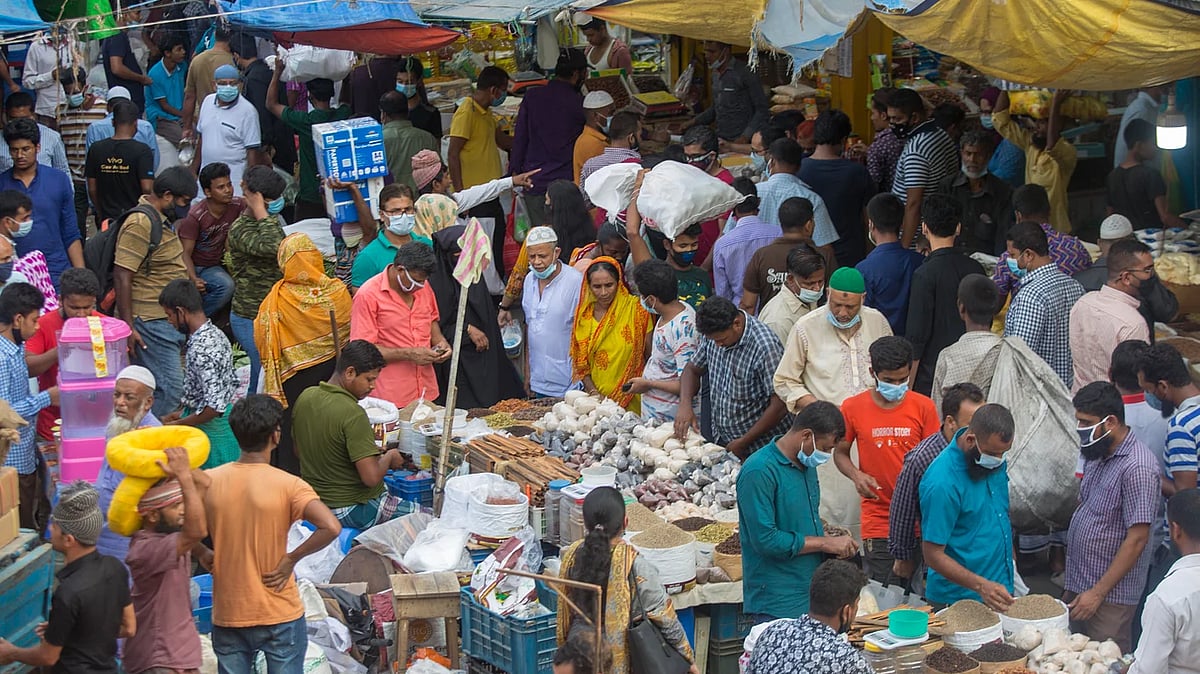Living cost in Dhaka rose nearly 7pc in 2020

Living cost in the capital city Dhaka rose by 6.88 per cent while the price of goods and services went up by 6.31 per cent in 2020.
In 2019, the percentages were 6.50 and 6.08 respectively. The previous year saw rising living cost and price of goods and services by 6 per cent and 5.19 per cent respectively.
The calculation proves that living cost of the Dhaka dwellers has been rising for three consecutive years, with the highest in 2020.
Today, Wednesday, Consumers Association of Bangladesh (CAB), at a virtual media brief, presented a report on living cost and consumers’ rights.
CAB prepared the report after analysing prices of 114 food items, 22 essential commodities and 14 types of services at 15 retail markets and different service entities. However, the analysis excluded education, medical and actual travel expenses from calculation.
CAB president and former chairman of Anti-Corruption Commission Ghulam Rahman presented synopsis of the report while Bhoktakantha editor Kazi Abdul Hannan anchored in the media brief.
The report says the cost of living in Dhaka rose by 6.88 per cent in 2020, which is the highest in last three years. Meanwhile, income of lower and lower-middle classes fell drastically amid the Covid-19 pandemic. Hence, the vulnerable groups particularly had to compromise with their life standard in 2020.
The report also made a comparison between price of goods during 2019 and 2020, assessing that price of rice rose by 20 per cent, lentil by 14.18 per cent, spices by 24.66 per cent, vegetable by 9.88 per cent, red-meat by 10.49 per cent, chicken by 10.83 per cent, egg by 5.32 per cent, fish by 7.13 per cent and powder milk by 7.64 per cent.
Besides, the lower and lower-middle class people had to pay 5.35 per cent more of their house rent. The price of 1,000 litre of Dhaka WASA water rose by 25 per cent, domestic supply of electricity by 6.05 per cent and commercial supply of electricity by 4.81 per cent.
On the other hand, the price of 1kg mustard oil decreased by 4.60 per cent, palm oil by 3.18 per cent and non-brand flour by 2.23 per cent. Meanwhile, the price of salt, tea, local and imported fabrics, T-shirt, towel and gamchha remained steady or unchanged.
The report said there are around 20 million people engaged in small, small-and-medium industries or enterprises across the country.
Citing a survey by the International Financing Corporation (A World Bank concern), the CAB report says 37 per cent of the mentioned 20 million people lost job due to the Covid-19 pandemic. Many other people experienced job cut and a number of businesses shut their establishments. Almost all the private-run enterprises either furloughed their workers or reduced the amount of salaries.
The government spent a huge amount of money while paying the capacity charge to some private-run power plants which were left idle. The CAB report says that the investment only benefited the power plant owners.
Highlighting the banking and investment sector, the report says there is no alternative to pump more fund as loan into the middle-range industries and commerce. The government-announced stimulus benefited the big-scale industries and businesses while deprived the small-and-medium enterprises from the fund.
Citing the planning minister’s comment, CAB report says that rich became wealthier while the common people were struggling with reduction of their income. Additionally the number of unemployed also increased due to the pandemic, CAB report says.
*This report appeared in online edition of Prothom Alo, has been rewritten in English by Sadiqur Rahman.